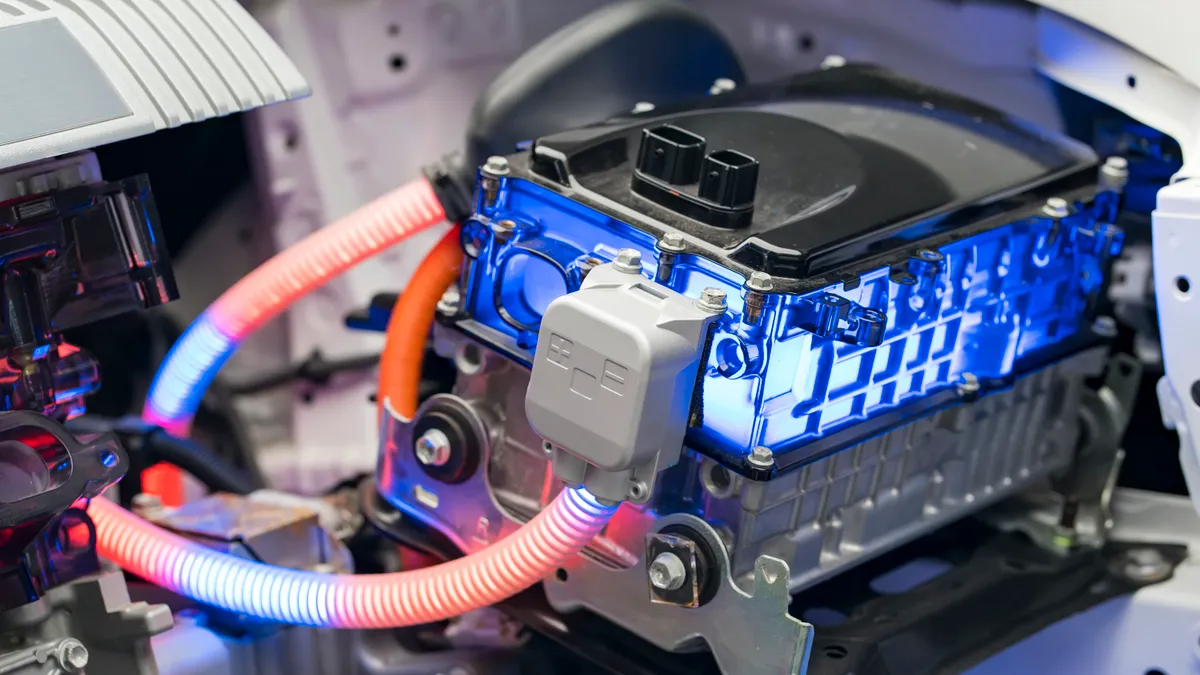The growth of the U.S.'s electric vehicle battery production base and supply chain sits at the center of President Joe Biden's plan to bolster the country's manufacturing industry.
Yet, the country still faces an uphill climb to prepare its lithium supply chain for the future.
To help plot a course toward a lithium-powered future, the Department of Energy created Li-Bridge, a public-private alliance managed by Argonne National Laboratory to accelerate the development of the domestic lithium battery supply chain.
Li-Bridge recently released an action plan to develop the U.S.’s lithium battery supply chain. It takes stock of the current state of the national lithium production base, and includes what steps are needed to put the supply chain on track to handle an increase in demand for domestically sourced lithium.
Increasing access to U.S.-sourced lithium won’t be easy. Here are ten key takeaways from the report, including what Li-Bridge sees as the sector’s biggest challenges and how to tackle them.
The U.S. battery market is not driven by domestic producers and suppliers.
The U.S. battery industry currently captures less than 30% of the value of each cell sold in the country. This equals roughly $3 billion a year and 16,000 jobs.
In comparison, China takes home 90% of the revenue created from its lithium battery demand, as China-based companies produce most of the country’s lithium batteries.
The country lacks proper access to an adequate lithium supply. It's a national security risk.
The U.S. remains heavily reliant on other countries for advanced batteries, including those used for military troops vehicles, bases and weapons systems, according to the report.
China, meanwhile, controls more than 75% of battery cell production, at least 70% of processed energy material production and more than 60% of energy materials refinement. Such a skewed supplier environment leaves the U.S. reliant on potential adversaries for its battery supply chain.
The U.S. will not meet sustainability targets unless it secures greater access to lithium battery technology.
The country hopes to reduce green house gas emissions 40% by 2030 and be net-zero by 2050. But given the current lack of funding for lithium battery innovation, slow speed of critical material mining projects and low incentive for foreign battery companies to invest in the U.S., Li-Bridge states that the country is not on track to meet its current climate goals.
There is a lack of qualified talent to fill the battery supply chain.
The lithium battery industry currently lacks significant skilled worker training in battery-grade material processing, active material and component production, cell manufacturing and end-of-life battery logistics.
To help build up this talent pipeline, battery producers and the government should collaborate with community colleges, apprenticeships and trade schools to help train workers and foster the growth of the workforce.
More investment incentives are needed to entice companies to bring projects to the U.S.
The country should offer capital spending, production and R&D incentives to encourage the development of battery technology and help offset private costs for companies. Point-of-sale incentives should also be expanded to include items such as EV medium- and heavy-duty trucks and buses.
In addition, the government should leverage procurement programs to support next-generation technologies and create an insurance pool for battery cell, pack and material producers to lower the risk of product recalls.
Enhanced support is needed to encourage manufacturing innovation for battery equipment.
The U.S. needs to invest heavily in scientific research related to lithium technology, materials and manufacturing, the report said. The country should provide commercialization support to new domestic companies developing battery products, including advising and assistance with filing patents.
In addition, the promotion of industry-wide standards related to lithium batteries, such as installation requirements for energy storage systems, will help ease market-entry hurdles.
The U.S. needs a better raw materials procurement strategy.
An enhanced strategy should include partnerships with other countries for prioritized access to critical mineral mines, recalibrated trade regulations to encourage U.S. companies to better compete for global business and a stronger National Defense Stockpile for battery-critical minerals and materials.
The plan suggests the creation of a national database of critical mineral resources. In addition, it calls for the creation of a consortium of companies for purchasing battery-related minerals from domestic and foreign sources, which it states would improve purchasing power and reduce risk due to access to a more diverse supplier pool.
Congressional action is needed to accelerate mineral mining and processing projects.
The report states that many mining and processing projects get bogged down in bureaucracy and a lack of community support. It calls for Congress to ease the permitting processing for such projects, and for state and local governments to streamline and standardize permitting processes as well.
The lengthy and unpredictable permitting and approval process reduces the average value of a mining project by one-third, according to the report.
The government should create a public-private partnership to coordinate efforts across state, local and federal governments with private enterprises.
The plan calls for the formalization of Li-Bridge to execute on its recommendations, equipped with a central program management office. The office would also report on the progress of these recommendations, and coordinate collaboration with allies.
The U.S. can capture more economic value by 2030 if it takes action.
If the country acts on Li-Bridge’s recommendations, the U.S. is poised to capture 60% of the economic value from each battery sold. Reaching the target is dependent on the country taking new actions to build up the country's manufacturing and processing base for minerals, as well as stronger procurement of critical materials.
It will take more than $100 billion of incremental supply chain investments to meet this 2030 goal.






















